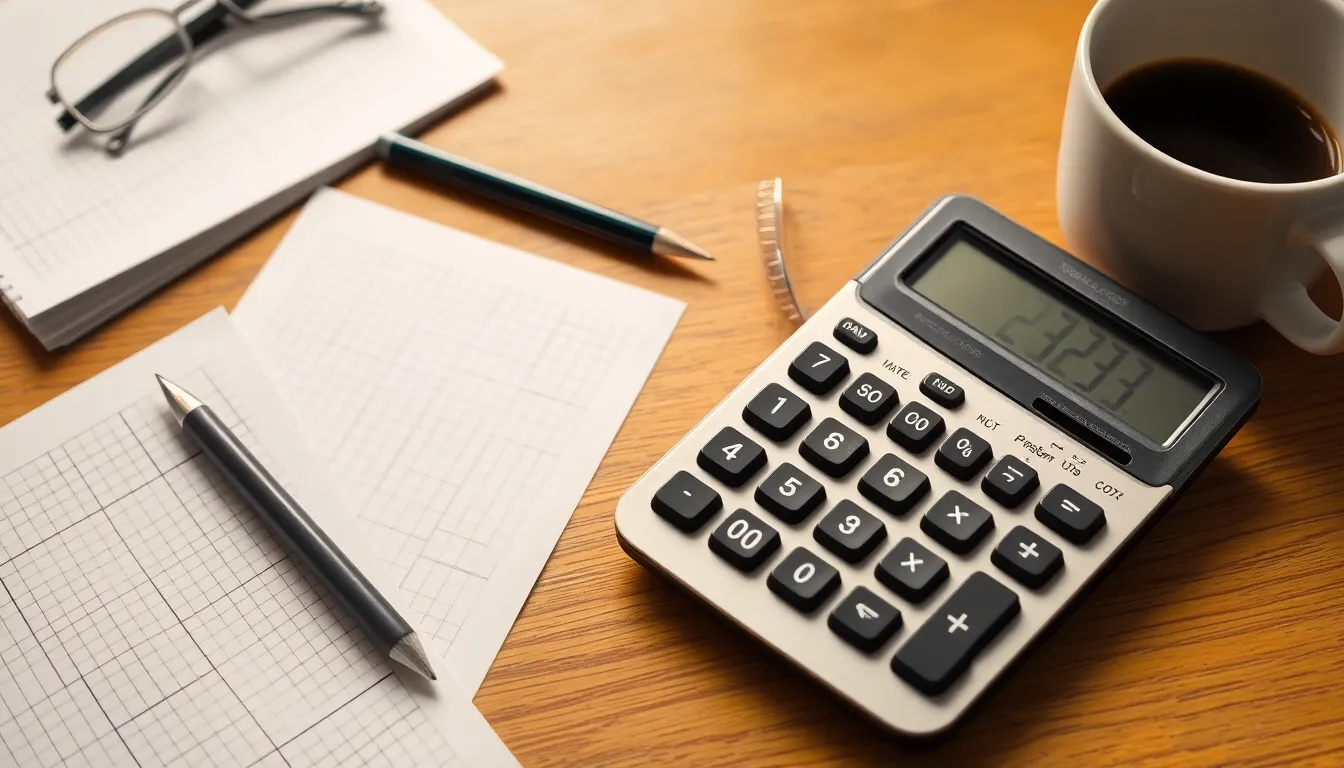Table of Contents
ToggleUnderstanding fractions and their percentage equivalents is essential in everyday life. One of the most common fractions people encounter is one-third. Whether calculating discounts, dividing tasks, or analyzing data, knowing what 1/3 represents as a percentage can simplify many situations.
Converting fractions to percentages helps make sense of numbers in a more relatable way. In this article, readers will discover how to easily find the percentage equivalent of 1/3. This knowledge not only enhances numerical literacy but also empowers individuals to make informed decisions in various scenarios.
Understanding Fractions
Fractions represent parts of a whole. They consist of a numerator and denominator, indicating how many parts are taken out of a total. The fraction one-third, written as 1/3, signifies that a whole is divided into three equal parts.
Converting fractions into percentages simplifies comprehension. To find the percentage equivalent of 1/3, divide the numerator by the denominator and multiply by 100. This calculation yields approximately 33.33%.
Understanding fractions fosters better decision-making in daily scenarios. Shopping discounts frequently utilize fractions, while data analysis often involves comparative percentages. Recognizing the significance of fractions and their percentages enhances numerical skills, allowing individuals to make informed choices effortlessly.
Converting Fractions to Percentages

Converting fractions to percentages is straightforward. Understanding this process provides clarity in everyday calculations.
The Formula for Conversion
The formula for converting a fraction to a percentage involves two simple operations: division and multiplication. The formula is:
[ text{Percentage} = left( frac{text{Numerator}}{text{Denominator}} right) times 100 ]
This formula allows individuals to find the percentage representation of any fraction efficiently.
Step-by-Step Conversion Process
- Identify the fraction: Determine the numerator and the denominator from the fraction.
- Divide the numerator by the denominator: Perform the division operation, yielding a decimal.
- Multiply the result by 100: Take the decimal from step two and multiply it by 100.
- Add a percentage sign: Attach a “%” sign to the result to express it as a percentage.
For example, to convert 1/3:
- Identify: Numerator = 1, Denominator = 3
- Divide: ( frac{1}{3} approx 0.3333 )
- Multiply: ( 0.3333 times 100 approx 33.33 )
- Add sign: Result = 33.33%
Completing these steps yields the percentage equivalent, enhancing comprehension and practical application of fractions in various contexts.
What Is 1/3 in Percentage?
Converting 1/3 into a percentage provides a practical understanding of its value in various contexts. The equivalent percentage of 1/3 is approximately 33.33%.
Exact Value of 1/3 as a Percentage
The exact value of 1/3 as a percentage can be derived from the formula:
[
text{Percentage} = left(frac{text{Numerator}}{text{Denominator}}right) times 100
]
By substituting in the values from 1/3, the calculation proceeds as follows:
- Divide 1 by 3, yielding approximately 0.3333.
- Multiply 0.3333 by 100.
- This results in 33.33%.
Thus, 1/3 equals 33.33% when expressed as a percentage, commonly rounded to two decimal points for practical use.
Common Misconceptions
Misunderstandings about fractions and their percentage equivalents persist. Some people mistakenly believe 1/3 equals 30% or 25%. This miscalculation typically arises from rounding or underestimating the fraction’s true value.
It’s crucial to recognize that 1/3 represents a portion that exceeds 30%, and the precise conversion reveals its actual value at 33.33%. Emphasizing the accurate conversion enhances comprehension, making it easier to apply this knowledge in real-life situations like budgeting and shopping discounts.
Practical Applications of 1/3 in Percentage
Understanding 1/3 as approximately 33.33% proves valuable in numerous practical scenarios. Individuals frequently encounter situations where converting this fraction to a percentage simplifies calculations.
Budgeting
In budgeting, knowing that 1/3 equates to 33.33% aids in allocating resources. For example, if someone intends to allocate one-third of their income to savings, understanding this as 33.33% offers clarity when planning expenditures.
Discounts
When shopping, recognizing 1/3 in percentage terms helps evaluate discounts. A 33.33% discount on an item priced at $90 results in substantial savings. Calculating the discount involves multiplying the original price by 33.33% to determine the final cost.
Data Analysis
Analyzing survey results or data breakdowns often requires percentage conversions. If a survey indicates that one-third of respondents favor a specific option, converting this to 33.33% clarifies its popularity relative to total responses. This conversion enhances the understanding of data trends.
Recipe Adjustments
In cooking, adjusting recipes often involves fractions. If a recipe calls for 1/3 of a cup of an ingredient, knowing this equals 33.33% assists in scaling recipes up or down. This conversion helps maintain proportions when serving different numbers of people.
Financial Planning
Financial planners often use percentages to communicate investment growth or rates. Understanding that 1/3 equals 33.33% can assist clients in grasping how their funds may increase over time, especially when discussing return on investment scenarios.
Recognizing practical applications of 1/3 in percentage form enables effective decision-making across various aspects of life. By mastering this conversion, individuals enhance their financial literacy and everyday calculations.
Understanding that 1/3 is approximately 33.33% opens up a world of practical applications in everyday life. This knowledge empowers individuals to make informed decisions when budgeting shopping or analyzing data. By mastering the conversion from fractions to percentages they enhance their numerical literacy which is essential in today’s data-driven world.
Recognizing the true value of 1/3 helps avoid common misconceptions and ensures accurate calculations. Whether it’s evaluating discounts or adjusting recipes this fraction plays a significant role in various scenarios. Embracing these concepts not only simplifies tasks but also boosts confidence in financial and analytical situations.







